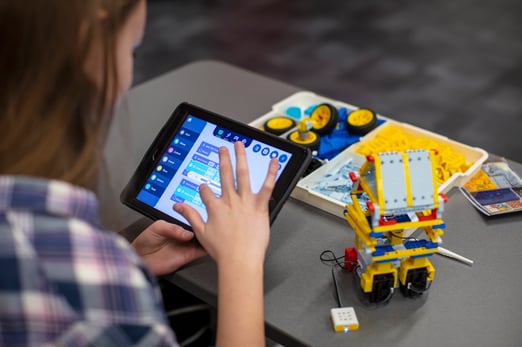
5 Problems Teachers Face in Today's Digital World
Technology transforms our lives. From how we communicate and interact, to how we learn, innovation has become part of our daily experience, especially for younger generations.
As technology continues to deliver new possibilities, digital tools are now being implemented more routinely in classrooms. These resources have the power to provide students with the skills they need to thrive in the future.
With STEM education on the rise, more teachers are considering how technology impacts students and the classroom environment.
Here are five problems that teachers face in today’s digital world and how to overcome them.
1. Access and Equity
While some educators are ready to implement more tech-based learning approaches, gaining access to the right tools can prove to be a challenge. Many schools may not have the resources to support coding, engineering, robotics, and other technology that help facilitate STEM learning. Another key factor in deciding if tech approaches should be utilized in the classroom is the matter of equity for students.
2. Screen-Time
The issue of too much screen-time has made some teachers cautious about technology implementation as part of student learning. Virtual education has further raised the question about how much screen-time is too much for children. This concern has many teachers wondering how to best approach technology integration while still maintaining off-screen learning, and the health of their students.
3. Classroom Distraction
Utilizing new technology in a classroom setting can cause teachers to question how engaged their students will be with each lesson. Some educators may wonder if having technology in the classroom could lead to distraction that takes away from student participation and focus.
4. Lesson Planning
Educators may be unsure about how to best implement technology approaches into their curriculum. Although digitally driven lesson plans may be of high interest to students and teachers, knowing where to start in terms of lesson development and facilitation can seem challenging without the right guidance and tools for success.
5. Pressure to Become a Digital Expert
When implementing new teaching methods that include digital approaches, educators may feel that they need to be a professional in tech. Since not all teachers have a tech background, this can feel especially challenging. They may have access to technological tools, but feel uncertain about how to use them. This disconnect can discourage educators from this type of teaching process.
Benefits of Technology in the Classroom

The benefits of educational technology have a profound positive impact for students and educators.
Technology integration creates a learning environment where students are more engaged. Digital tools spark curiosity, and inspire students to explore ideas in a unique, and exciting way. STEM approaches allow students to grasp difficult subject matter while having fun and developing confidence in their ability to problem-solve.
STEM occupations are projected to grow by 8% between 2019 and 2029, exceeding the growth rate of jobs in other industries. STEM employment also has a higher median wage, and less likelihood for employment change than other career paths. Educational technology helps prepare students for the future and gives them the skills needed to create endless possibilities for themselves, and society.
Teaching with technology helps with diversity and inclusion, giving girls and other underrepresented populations access to the tools that build capacity in the STEM pipeline.
Overcoming the Obstacles

How can educators overcome the challenges they face in today’s digital world, and create learning environments that benefit them and their students? Access to the right resources and having a support system make incorporating technology into the classroom an easy process.
- Use technology to create equity in classrooms. By using new tools and approaches, teachers can create equal learning opportunities for students that may have different learning styles.
- Enhance other methods of teaching with tech. Technology can work alongside other forms of learning to create a well-rounded educational environment for teachers and students.
- Implement STEM courses that make learning fun, memorable, and collaborative.
- Utilize comprehensive curriculum with step-by-step, hands-on lesson plans that make using tech in the classroom stress-free.
- Participate in interactive professional development that meets your specific needs and increases your confidence in using technology in the classroom.


STEM education encourages the next generation of engineers, technologists, scientists, and artists. Our team of STEM experts are here to support you in implementing meaningful K-12 learning experiences that empower students and educators. Request more information today about how you can incorporate STEM learning at your school and increase student achievement.
Related Articles
STEM Q&A: Mshindani Thompson-Cook, Educator
Q: Can you tell me about yourself and your background in education?STEM Q&A: Andrea Huff, Career & STEM Academy Director
Q: Can you tell me about yourself and your background in education?EDforTech Corp
Our mission is to help schools prepare the next generation of engineers, technologists, and scientists who will be solving the world’s problems. We believe in creating learning environments that engage every student, promote critical thinking and problem solving. We support schools in implementing STEM programs by providing world-class STEM learning environments that serve the needs of a wide range of teachers and students.



